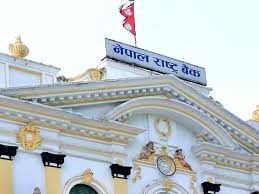Liquidity shortage lasts longer due to Domestic and External Sector pressure

Ajay Chhetri / Kathmandu, Jan. 25: The liquidity management issue has lasted longer in the bank and financial institutions (BFIs) alongside the daunting macroeconomic indicators.
The Nepal Rastra Bank (NRB) data shows that the trend of the excess liquidity indicator fluctuated around Rs. 122.9 billion to Rs 120 billion at the beginning of the current FY. However, it began depleting from there hitting the rock bottom to Rs. 17 billion on January 25.
The current situation in managing liquidity in the BFIs could be pointed out to the rising external sector pressure together with the upsurge in the domestic economy.
The foreign trade statistics (FTS) of the Customs Department recorded a high rise of imports in the first half of the current fiscal year (FY). The imports sprung up by 51.13 per cent in the first six months in comparison to the same period of the previous FY. Import is one of the main causes for leakage of local currency from the economy.
Besides swelling imports, the diminishing remittance has led the BFIs liquidity position to a vulnerable situation. The Current Macroeconomic and Financial situation data of the NRB revealed that the Nepali migrant workers’ remittance contracted by 6.9 per cent in the first five months in comparison to the same period of the previous FY.
Alongside external pressure, the domestic economy is also flexing out after being badly hit during the second wave of the COVID 19 pandemic. Subsequently, the demand for loanable funds took off in recent months. The Current Macroeconomic and Financial situation data reveals that the private sector credit boosted by 11.1 per cent in the first five months in comparison to the same period of the previous FY.
Further, the government’s capital expenditure also could not be stimulated as per the target. The government has set the target to spend at a rate of 10 per cent per month over this FY. But in contrast, 13.71 per cent of the target is spent in the first half of the current FY.
These all factors contributed to the disruption of the flow of liquidity in the bank and financial system.
The Research Department’s executive director of NRB, Prakash Kumar Shrestha, agreed that swelling imports besides leap in the credit flow in the private sector has exerted pressure on liquidity management. He stated that excess liquidity is pulled down to Rs. 17 billion as of January 25.
